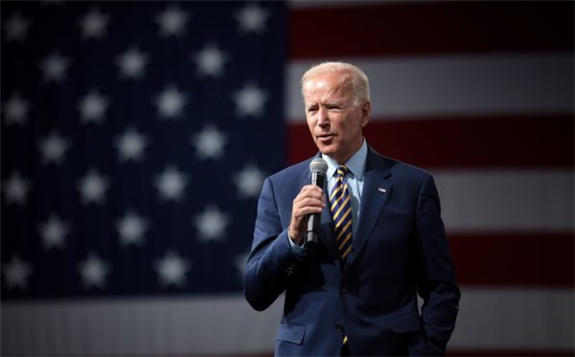The Biden administration revealed a $2 trillion infrastructure investment plan intended to create millions of jobs, rebuild the country’s infrastructure, and target the benefits of climate and clean infrastructure investments to disadvantaged communities.

Solar made it into the American Jobs Plan in the form of a proposed 10-year extension and phase down of an expanded direct-pay investment tax credit and production tax credit for clean energy generation and storage.
The plan would also use the federal government’s purchasing power to secure 24/7 clean power for federal buildings.
Besides extending the investment tax credit, the Biden proposal would create an investment tax credit to incentivize the buildout of at least 20 GW of high-voltage-capacity transmission power lines and mobilizes tens of billions in private capital.
Aging transmission infrastructure has long been cited as an issue that will hold the clean energy transition back from achieving its full potential.
The plan would also establish a new Grid Deployment Authority at the Department of Energy. It would allow for better leverage of rights-of-way along roads and railways via financing tools to spur additional high-priority, high-voltage transmission lines.
EV support
Affirming his earlier commitment to move the federal vehicle fleet to electric vehicles (EVs), Biden also proposed a $174 billion investment in EV, aimed at spurring domestic supply chains from raw materials to parts, retooling factories to compete globally, and supporting American efforts to make batteries and EVs.
The plan also would offer consumers point of sale rebates and tax incentives to buy American-made EVs that are affordable and manufactured in the U.S. State and local governments as well as the private sector would have access to grant and incentive programs to build a national network of 500,000 EV chargers by 2030.
The plan also includes goals of replacing 50,000 diesel transit vehicles and transitioning to an electric school bus fleet.
R&D investment
Biden once again noted U.S. declines in investment in research and development (R&D). Biden called on Congress to invest $50 billion in the National Science Foundation to create a technology directorate that would work with and build on existing programs across the government. The initiative would focus on a number of R&D fields, including advanced energy technologies.
Independent of this proposed $50 billion, Biden also called for Congress to invest $35 billion to address the climate crisis and “position America as the global leader in clean energy technology and clean energy jobs.”
The investment would include $15 billion in demonstration projects for climate R&D priorities, including utility-scale energy storage, carbon capture and storage, hydrogen, floating offshore wind, biofuel/bioproducts, and electric vehicles.
Industry response
The solar industry and broader clean tech sector greeted the proposal with near-uniform support Of the plan, Abigail Ross Hopper, president and CEO of the Solar Energy Industries Association (SEIA), “President Biden’s infrastructure proposal is a significant step in meeting our collective clean energy goals. The plan creates jobs, spurs the economy, faces the climate crisis, and advances environmental justice.”
In an interview with pv magazine USA earlier this year, she emphasized the importance of stable policymaking, particularly at the federal level.
Gregory Wetstone, president and CEO of the American Council on Renewable Energy (ACORE), had similar praise for the plan. In a statement, he commended the Biden administration for using the infrastructure bill to tackle the climate crisis. He said, “The American Jobs Plan will move the clean energy sector beyond the endless cycles of temporary stopgap incentives toward a stable, long-term tax platform that will put millions of Americans back to work, upgrading our outdated grid and building a 21st century renewable energy economy.”
But Brett Hartl, government affairs director at the Center for Biological Diversity, criticized the plan, saying that it “falls short on climate.”
Rather than adopt a Marshall Plan-type approach to climate and renewable energy, he said the “industry-friendly infrastructure plan” includes “gimmicky subsidies for carbon capture, fantastically wishes the free market will save us, and fails to take crucial and ambitious steps toward phasing out fossil fuels.” He said that although the Biden administration has pledged to cut carbon emissions 50% and decarbonize the electricity sector “this proposal won’t even come close.”